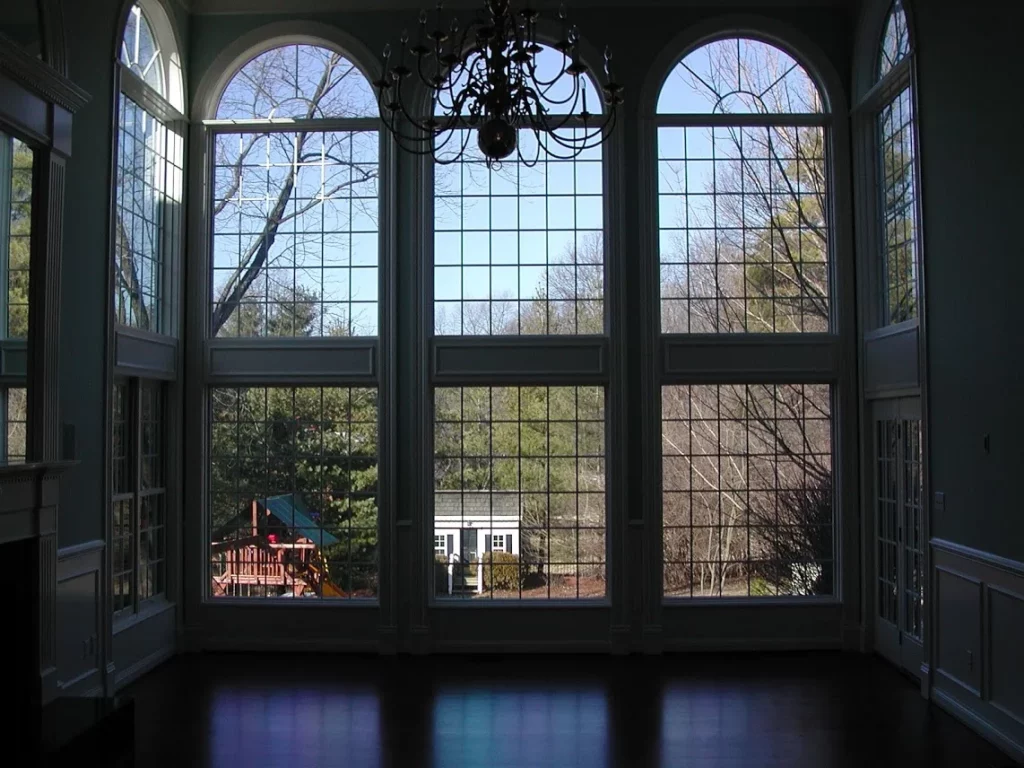Windows do more than let light into your room, though that’s certainly an important function. The shape and style of the windows also affect the appearance of both the façade and your interior rooms. You may be well-acquainted with standard styles, such as double-hung and casement windows. However, other window configurations can help set your house apart.
Oriel Windows
Oriel windows are the upper-story version of bay windows. Like bay windows, oriels consist of a set of windows that protrude from the wall. What sets them apart is that they’re mounted on top of a foundation that also protrudes out, usually in the form of a bracket or corbel. The bump-out can be round or angular.
You commonly see oriel windows in historical style homes, including Victorian and Tudor, especially when the foundation is ornamented. But you can see sleek, all-glass oriel windows as part of modern construction.
Consider oriel windows if you want to increase the living space in an upper-story room — the bump-out usually accommodates a window seat or shelving. The additional glass also allows for more natural light.
Chicago Window
In experimenting with oriel windows, the Chicago School developed its own style, called the Chicago window. This window features a stationary picture window in the center. The picture window is flanked by two smaller windows. These windows are narrow and must be double-hung — the muntin, or supporting bar, in the center is a necessary aspect of the style.
Unlike oriels, a Chicago window can be either a bump-out or a flush window. You can locate this window on the ground floor as well as on the upper stories. Visitors and passersby are unlikely to recognize this style difference. However, the Chicago window does let in a lot of natural light, and you can get ventilation by opening the double-hung windows.
Diocletian Window
A Diocletian window is also made up of three windows. The central window is rectangular with a slight arch. The two side windows arch down more sharply on the top. The overall appearance is a wide, continuous arched window. Diocletian’s Baths in Rome, Italy, serve as the inspiration for this specific window configuration.
Many designers don’t label these multi-paned arches as Diocletian windows. However, you do see configurations of this style in many homes. Arches speak to a classical beauty that transcends time periods, so you find them in contemporary as well as historical homes. The key is having enough width to accommodate all three windows.
While the three windows are separated by wide columns in the Diocletian’s Baths, you can choose a style that’s more closely oriented. Consider this configuration if you want to incorporate arches; since it’s a more unusual style, the Diocletian window is a show-stopper.
Gothic-Head or Lancet Window
Two similar styles of windows are the gothic-head and lancet. Both features pointed arches at the top. The lancet is actually a style of the gothic-head window, just with a pointier top. Indeed, lancet windows are tall and narrow to resemble a lance. Gothic-head windows are often wider. Historical gothic windows featured tracery, which created designs at the top of the glass.
Naturally, both styles of windows are common in Gothic Revival homes as well as Carpenter Gothic and Victorian Gothic. The Carpenter Gothic style features a more rural take on the ornamentation of the Gothic Revival, while Victorian Gothic is a dramatic take on the style. In any of these houses, you see gothic-head and lancet windows in their ornamented styles.
Simplified versions of gothic-head windows are standard in more contemporary homes. In this case, a standard multi-paned sash comprises the lower half of the window. The top features a gentle point with simple tracery to emphasize the shape. You could use such a window to complement bedrooms or the living room.
Experiment with different styles of windows to give your house a unique character. Let Pella Windows & Doors of Wisconsin add the wow factor to your home with high-quality windows.















